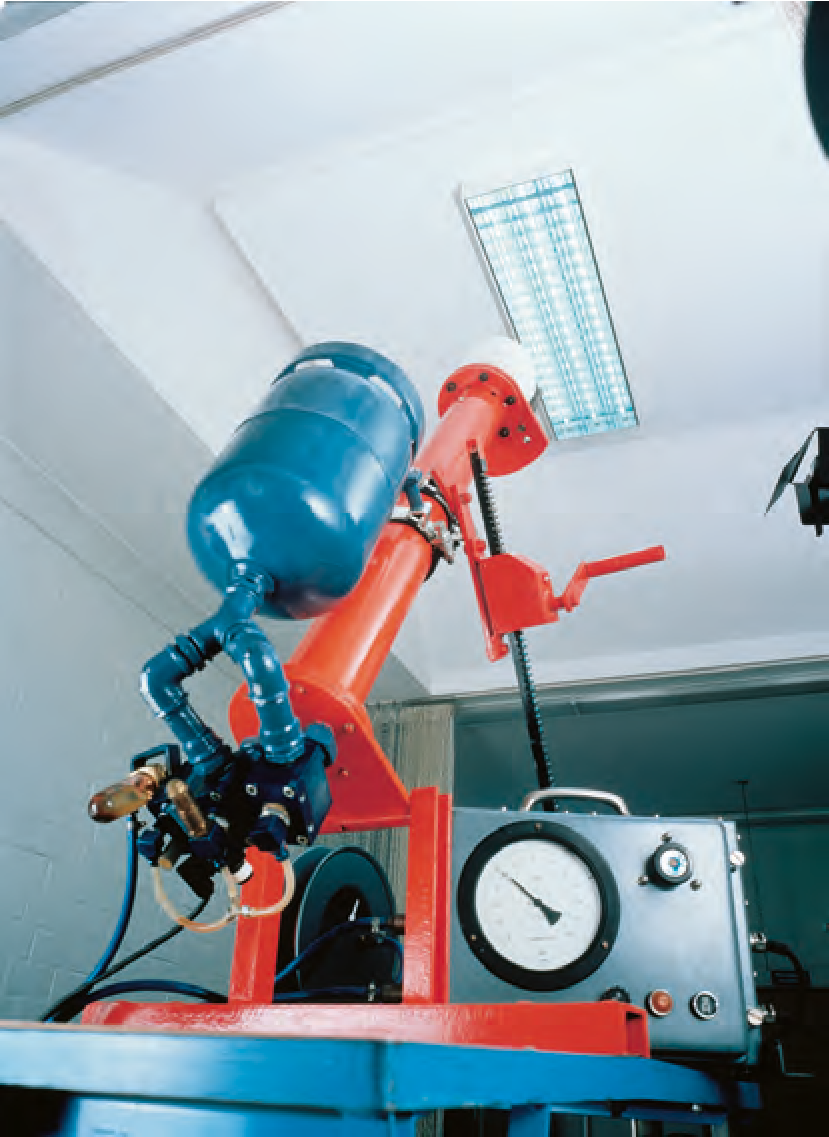Sports halls and gymnasiums are home to games with fast-moving balls whose kinetic energy is capable of destroying electrical equipment. Aside from the equipment’s loss of function, parts of it can also fall down and present an accident risk to people. Therefore, German standard DIN 18032-1 "Sports halls – Halls and rooms for sports and multi-purpose use – Planning principles" contains construction requirements for sports halls. According to this standard, luminaires as well as their accessories such as trunking or suspension materials must be ball-proof.
Ball impact resistance

Figure 3.207: Ball-impact test device
e Test conditions for ball impact safety are described in DIN 18032-3 "Halls for gymnastics, games and multi-purpose use, testing of safety against ball throwing" and in DIN 57710-13 "Luminaires with operating voltages below 1000 V; luminaires safety to ball throwing". Following these conditions, luminaires are tested using a ball-shooting device. After a total of 36 handball shots from three directions at an impact speed of ca. 60 km/h, luminaires may not exhibit any significant damage; most notably lamps must not break and no parts may fall down during testing. The mark issued for ball-impact safety is the ball symbol.
In sports or tennis halls, the installation of surface-mounted luminaires directly to the ceiling of the hall is not always possible or practical. This is the case e.g. where beams or light domes interrupt what would need to be a continuous installation surface or where luminaires directed towards the playing field present photometric advantages. Such cases benefit from trunking installations. Ball-impact safety must be tested for and ensured for this installation type as well.
Unlimited ball-impact safety in both surface and suspended installation fundamentally can only be ensured if the manufacturer’s notes in the installation instructions are observed.
To prevent tennis balls from getting caught in optical systems, only luminaires with closed prismatic covers or suitable louvres should be used in tennis halls. Given the diameter of tennis balls – between 63.5 mm and 66 mm – louvre fields should be designed accordingly narrow. In facilities where even smaller balls are used, e.g. in squash, only closed luminaires are permissible.